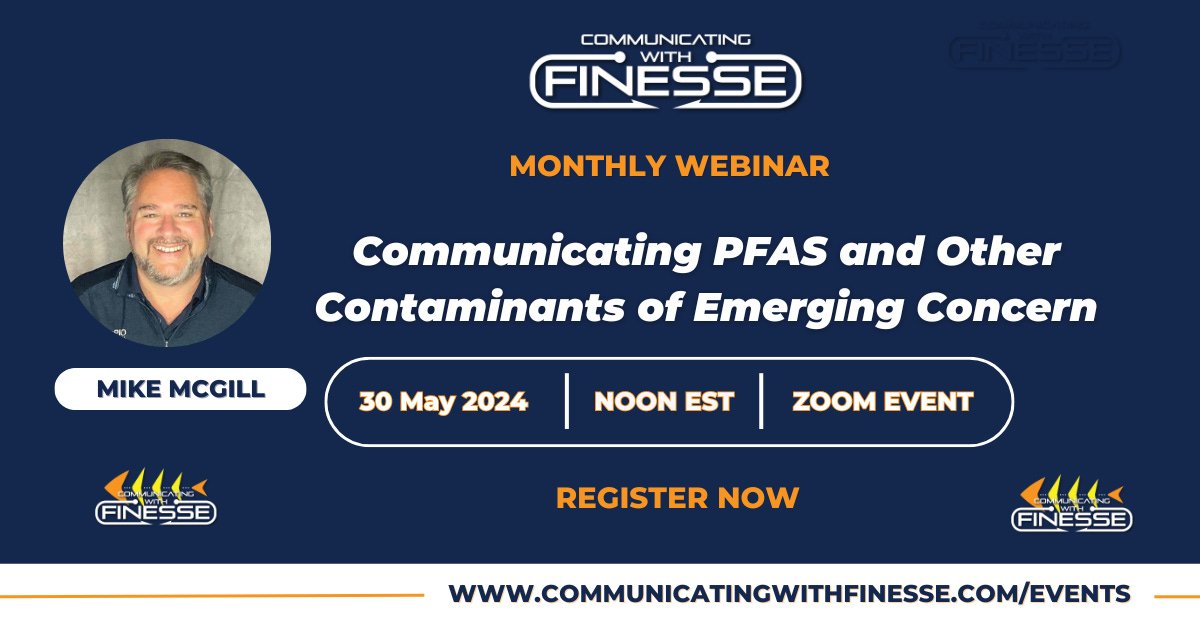
The United States Conference of Mayors created a PFAS Toolkit. The information and resources included provides insights into several key aspects that local governments and businesses should be aware of in relation to PFAS (forever chemicals). Key parts of the PFAS Toolkit are presented here.
PFOA and PFOS in Drinking Water: Overview
Per- and polyfluoroalkyl substances (PFAS) are a group of chemicals developed in the 1940s that have been used in a variety of consumer products like semiconductors, cellphones, textiles, renewable energy, and medical devices. Two chemicals, perfluorooctanoic acid (PFOA) and perfluorooctanesulfonic acid (PFOS) are no longer produced today, but they were once used in a wide variety of industries. Today, trace levels of PFOA and PFOS can be measured in water, air, soil, animals, humans, and some consumer products globally. PFOA/PFOS are persistent in the environment, and some studies suggest that long-term exposure at increased doses may lead to negative health impacts.
Understanding Potential Human Health Impacts: Topline
The potential human health risks associated with low-level exposure to PFOA and PFOS are not clear. Expert opinions and advisory levels from the regulatory community vary widely. More studies are required to fully understand the health impacts of PFOS and PFOA in our drinking water.
Join Communicating with FINESSE for May’s fee webinar, Communicating PFAS and Other Contaminants of Concern”, on Thursday, May 30, 2024. Well-known communications specialist Mike McGill will share his front-line insights and recommendations.
Regulatory Overview: Topline
As the Agency (USEPA) moves forward in upcoming rulemakings around PFOS/PFOA, including new drinking water standards and CERCLA designations, local leaders will need to stay informed of the regulatory process and how best to stay engaged.
Cost Impact of Proposed PFAS Regulations: Topline
Industry experts and other studies suggest that EPA’s conservative cost estimate of $775 million per year is likely to be significantly underestimated. On top of strained capacity and limited resources, local governments will be forced to bear the financial burden of cost compliance. This will likely result in higher water rates for customers, with the most disadvantaged communities being the most affected.
Frequently Asked Questions
1. Why should I care about PFOA/PFOS?
The EPA has been investigating PFAS in drinking water in recent years, and in March 2023 they released new proposed PFOS/PFOA MCLs at very low levels. PFAS has been dominating headlines and garnering media attention. And while some communities today have levels of PFOS/PFOA in their drinking water that require remediation, most communities do not have PFOS/PFOA levels that present meaningful health risk.
Understanding the health risk and communicating with your communities and regulators will be important because testing and treating PFOS/PFOA in drinking water will come at a great cost and may well present issues with the disposal of PFOS/PFOA (soon to be designated as a hazardous material, under CERCLA). With federal regulation, even the local water systems that do not have a threat of these substances in their systems will be impacted. These regulations will result in significant costs for local governments and municipal drinking water and wastewater facilities.
2. How do I know if PFOS/PFOA in drinking water is a risk to my community?
In communities where high levels of PFOA/PFOS exposure are a concern, water utilities have implemented PFOA/PFOS testing and treatments to meet state requirements. However, PFOS/PFOA exposure alone does not warrant a health risk. Health risk is determined by the amount of a particular contaminant in a region combined with the toxicity of the contaminant at a specific level. While there are regions in the U.S. that face high PFOS/PFOA concentrations, more occurrence data is needed to determine where high-concentration areas of PFOS/PFOA exist nationally.
3. Where is PFOA/PFOS found?
According to the EPA, 20% of PFOA/PFOS exposure comes from drinking water. Other human exposures may come from air, soil, animals, and consumer products all over the nation and the globe. Consumer products containing PFOS/PFOA include semiconductors, cookware, cell phones, textiles, renewable energy, and medical devices. PFOS/PFOA may also found in some types of food packaging, stain- and water-resistant coatings, nonstick 6 coatings and fire suppressants.
4. How do you measure for PFOS/PFOA in drinking water?
EPA researchers are in the process of developing and validating laboratory methods to detect and quantify PFOS/PFOA in air, water, and soil. In general, laboratory methods have advanced over the last several years and we are now able to detect trace amounts of contaminants, even at limits where they may not be harmful. You can view these methods on the EPA website, here.
5. How can we remove PFAS from drinking water?
There are several treatment technologies used to remove PFOS/PFOA from drinking water. These include Granular Activated Carbon (GAC), Ion Exchange (IX) Resin, and Reverse Osmosis (RO). Right now, the biggest challenge with these treatment systems is scalability and cost. Treatment options are very expensive and there is no uniform treatment at the moment.
This article is taken from the United States Conference of Mayors PFAS Toolkit.
This article first appeared on www.jdsolomonsolutions.com

How do the new PFAS regulations impact your business? What do you say when your boss asks your opinion on PFAS and other contaminants of emerging concern? Join industry communications expert Mike McGill, who has been at the forefront of this issue for several years, as he provides his insights, successes, and lessons learned on communicating this difficult topic.
Some of the learning objectives are:
- Learn why PFAS is “emerging,” although it has been around for decades.
- Understand the process and logic that USEPA used to pass the new regulations.
- Apply communication approaches on this topic in different settings (i.e., personal, work teams, senior management, public)
- Understand common frequently asked questions.
- Apply practical communications input as a technical professional.
Communicating with FINESSE is a not-for-profit community of technical professionals dedicated to being highly effective communicators and facilitators. Learn more about our publications, webinars, and workshops. Join the community for free.
Leave a Reply